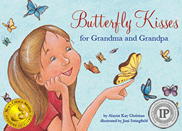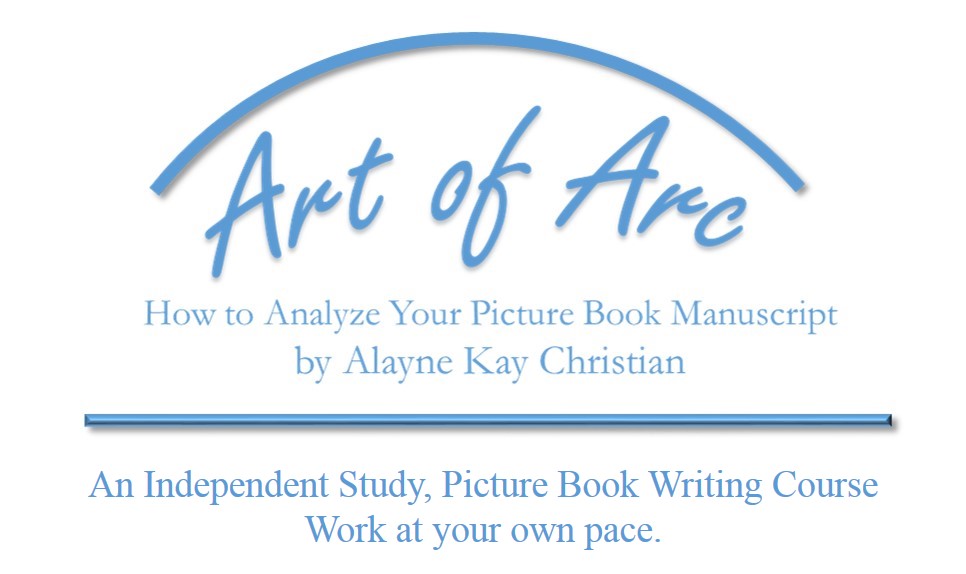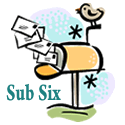
For our final “Wisdom” topic of the year, I asked the Kid-Lit Writing Wisdom team for their thoughts on writing effective and satisfying picture book endings. And with all the wisdom combined, we ended up with another great free course in picture book writing (although much of our wisdom can be applied to longer works). Our thoughts and tips on this topic will be presented in three parts, so keep an eye out for more. Before, I move on to our wisdom, we have some good news and announcements to celebrate. You can find a list of links to all of our 2021 Kid-Lit Writing Wisdom posts at the end of this post.


Pippa Chorley’s latest picture book OUT OF THE BOX (illustrated by Danny Deeptown and published by Marshall Cavendish) will be coming into the world in mid-November. You can find some more info on KIDLIT411 here. CONGRATULATIONS!
Laura Gehl’s board book ODD BEASTS: Meet Nature’s Weirdest Animals (illustrated by Gareth Lucas, published by Abrams) was born on November 2. HAPPY BELATED BOOK BIRTHDAY!

Laura Gehl’s book WHO IS A SCIENTIST? received a blue star review from Kirkus!
“Convincing evidence that readers, too, might become scientists.” – Kirkus Reviews
You can read the whole review here.
Rob Sanders’ recently released picture book STITCH BY STITCH: CLEVE JONES AND THE AIDS MEMORIAL QUILT received a blue star review from Kirkus and a starred review from Publishers Weekly! This baby is off to a good start! CONGRATULATIONS!
“Storytelling and history, beautifully stitched together.” Kirkus Reviews
Read the whole Kirkus review here.
Read the whole PW review here.

To kick off our series on writing effective and satisfying endings, I will share an excerpt from Art of Arc that I think is an important tip.
“From the beginning and all the way through the story, the destination is the ending. Therefore, everything you write should relate to the ending. Every word, sentence, and scene should relate to the ending. And the ending should relate to the beginning.”
COMMON MISTAKES WITH ENDINGS
One thing that I often see in picture books that I edit or critique is the last lines feature a character that is not the main character. In my opinion, the main character should always be the one under the spotlight at the end of his/her story.
Another mistake that I often see is bringing a new character into the story toward the ending for no other reason than to facilitate resolving the story.
Allowing the main character to be a victim of circumstances instead of the master of his destiny or allowing the main character to be the recipient of a sheer-luck induced or happenstance resolution that comes way too easily are common issues in stories I critique.
Similar to the above, having someone else solve the main character’s problem usually diminishes and destroys your main character’s role as the hero of his story. There are stories, where the main character seeks out or asks for help. However, I prefer stories where main characters make their own choices and decisions and then take action based on those decisions. I’ve seen older or wiser character’s help guide the main character toward the direction of the final action and discovery. I’m sorry, I can’t think of any books off hand. But if you study picture books, you will find the older or wiser rescuer or guide seldom shows up, and if one does, the main character remains the star/hero of the story in the end.
Ahh, I just thought of two books that have someone help solve the problem. They are both older books, but good examples of allowing an older/wiser person to help while still keeping the main character the star.
In MADDI’S FRIGE by Lois Brandt, the mom eventually steps in to help. However, only because the main character decided to tell her mom about her problem. But in the end, the main character and her friend Maddi are the stars in the spotlight. Change in the story is a result from choices and decisions that the main character makes.
In THE LADY IN THE BOX by Ann McGovern, it can almost feel like the mom hijacks the story once the kids decide to tell the mom about their problem. However, the reason this works is the story always remains told from the main character’s point of view. And again, she is the star in the spotlight at the end of the story. Change in the story is a result from choices and decisions that the main character makes.
In both of the above examples, the story topic included a problem that was too big for a picture-book age child to handle by herself. For either character to successfully handle these tough situations would have been unrealistic.
Now, I’m going to move away from common mistakes and move on to different types of picture book endings. Many of our wise authors talk about the same topic, I’m just saying it in a different way because I think it’s valuable information.
SOME TYPES OF PICTURE BOOK ENDINGS
As some of our wise authors have stated there are at least two kinds of endings. The “Aww” ending, which is usually an emotionally touching ending, and the “Aha!” ending, which usually leads the reader to a surprise or some sort of unexpected realization. Then there is the “Wow!” ending which is when the ending is so unexpected that it changes the way you view the whole story. There is sometimes a fine line between a wow ending and an aha ending. The other ending, which is also a surprise, is the funny (Ha-ha) ending where the payoff is so huge or funny that the reader can’t stop thinking about it and wants to read it over and over. All the endings are kind of closely related because they all have elements of surprise mixed with satisfaction. And they all touch the reader on an emotional level. So, that tells me that emotion, surprise, and satisfaction are key factors in creating a strong and effective ending.
The “aha” ending feels like a surprise but it also feels inevitable—but not predictable. It’s kind of like, “I can’t believe I didn’t see that coming.” Or maybe even a “Wait. What?” When it comes to aha and wow endings, there is little better than giving our readers a moment where they suddenly see or understand the story in a new or clearer way. If our story ending causes the reader to pause and reevaluate the story, we’ve done a good job.
With the “aww” ending, the reader is satisfied and touched emotionally because after a “try and fail” arc struggle, the main character’s emotional needs are finally met. This doesn’t always come from the character getting what he wants. Sometimes, it’s from getting what he needs. With the aww ending, the reader usually has a sense of empathy with the character, and this empathy generally started earlier in the story via the emotional roller coaster ride, but then that final moment of empathy is where the reader gains a sense of satisfaction. “Oh good. All is well.” This kind of story ending leaves the reader feeling comforted with a strong sense of closure, which stems from the discomfort the character experiences earlier in the story (the emotional roller coaster ride).
As you’ll see many of our wise author’s mention offering a surprise twist at the end of a story. This will give the reader one last boost before closing the story. And the surprise twist is a great tool for setting up aww, aha, wow, or ha-ha endings.
Joyce Wan says, “When a book takes you where you didn’t expect to go, that makes the trip all the more exciting and fun. When done well, an unpredictable twist can turn a good book into a classic and is often what makes repeated re-readings a pleasure. In subsequent readings, the reader enjoys being in the know and re-reading a book when you know what’s coming can be enjoyable in its own right too.”
CIRCLE BACK PICTURE BOOK ENDINGS
I love writing picture book endings that circle back to the beginning of the story. The endings I craft often refer back to the opening lines, and then add something more to show that the main character has grown and changed throughout the pages of the book.
For example, in SCARLET’S MAGIC PAINTBRUSH (illustrated by Sandie Sonke)
Opening lines: One day, Scarlet found a magic paintbrush and everything changed.
Ending lines: With her own magic, she painted what she saw in her heart . . . Scarlet’s masterpiece.
Readers follow Scarlet as she learns to let go of perfection and find her own magical creativity.
In PLANTING FRIENDSHIP: PEACE, SALAAM, SHALOM (illustrated by Kate Talbot) –
Opening lines: On the first day of school, the wind rattled and leaves swirled. Molly’s knees knocked as she buttered her toast. Would the other kids like her?
Ending lines: That season, the girls planted trees of friendship. And built bridges of hope. Together. In Peace Park and beyond. Peace, Salaam, Shalom.
Readers follow three girls of different faith traditions through the seasons of a school year, as they discover friendship and celebrate their differences.
And in READY, SET, GORILLA! (illustrated by Sandy Steen Bartholomew) –
Opening lines: Gorilla liked racing his school pals. But most of all, he loved to win . . . at any cost.
Ending lines: They all lined up. They crouched down. Together, they shouted Ready, Set, GO! Off they raced . . . and everyone was a winner.
Readers follow Gorilla as he learns that having friends and playing fairly makes him a winner.
As you create your own picture books, experiment with different types of endings and see what resonates with you. Happy writing!
A SATISFYING STORY ENDING IS UNEXPECTED YET INEVITABLE
Jane Yolen taught me that a satisfying ending is unexpected yet inevitable. Here are three endings from books I’ve written–always with Jane’s advice in mind.
- MOOTILDA’S BAD MOOD‘s ending is surprising, yet makes sense. Mootilda’s bad mood has es-cowlated all day, until she chooses to think about her friends instead of herself. The final spread shows her with the sign: “Cow-nseling, expert in the field.” Mootilda sits with her pen, notebook,a box of tissues, and Crow on a couch across from her. He begins his session with, “I’m in a bad mood.” This ending also mirrors the beginning of Mootilda’s journey when she says, “I’m in a bad mooood!”
- COW SAYS MEOW has a circular ending where the end hearkens back to the beginning, and encourages the reader to read the book again.
OPENING line: “Cow says… Meow.”
CLOSING line: “Cow says…Pssst. Can I meow again?”
3. COLD TURKEY ends with the opposite of the beginning. You guessed it, he starts out cold, and the last line is: “TOASTY TURKEY!”
Circular, surprise and opposite endings are only a few of the numberless ways we can create satisfying endings. So, don’t be afraid to try out multiple endings for your story–read, re-read, write, re-write and find the solution that gives you that satisfied feeling of closure. You’ll find it’s almost always something unexpected….yet inevitable.
GIVE THE READER SOMETHING TO TAKE AWAY
Endings and beginnings are equally difficult. And they’re intricately dependent upon each other. Endings need to circle back to the beginning in some way—as an “answer” to the story question posed, or the “bridge” that takes the story into the future. As a person who writes historical stories, the decision of where to start and stop is crucial. Just as identifying that inciting incident is essential, knowing when your emotional arc is complete is, too.
- Endings can’t be too abrupt. Or drone on and on.
- Endings must be clear, but not sappy or didactic.
- They should elicit an emotional reaction, linger, resonate.
- The take-away must be just that—something a child can carry in their mind or heart or funny-bone.
When I work on revising an ending, I copy and paste the section into another document and redo, redo, redo. Small tweaks, rephrasing, rearranging. Over and over and over until I work through to that just right piece that will bring satisfaction and go a step further to carry something forward. I like to think of the process of writing as mining—digging deep into story and also into self to find that special take or “heart” to shape, polish, and thread through. Your ending is the resulting “gem.”
I like endings that provide an invitation for a child to rethink themselves.
In An Inconvenient Alphabet, I used the “conventional you,” addressing the reader, in both beginning and end. The last page says: “Next time you sound out a word, think of Ben and Noah. Thay wud bee pleez’d beecuz that iz egzaktlee wut thay wonted!” It’s sort of “congratulations, you’re a great thinker, too”—a chance to rethink self.
Another way I think of endings is laying a thought or idea in the lap of the reader.
The end of Lizzie Demands a Seat! plants the seed for carrying social justice action forward.
“Smelly” Kelly and His Super Senses ties back to the the beginning question, “What good was an extraordinary nose?” and Kelly’s desire for a “power” that would make him special. At the end he discovers that his special power is inside, then… “James Kelly gazed at the waiting passengers. He would bet each person had something special inside. He could almost smell it.” (the last sentence is also in the opening) This is an invitation for a child to think about what makes him or her special, but also a “lay it in their lap” ending.
The end ties up the story with a bow, a gift for the reader to carry forward.
At the end of Tad Lincoln’s Restless Wriggle, people around Tad finally see the goodness in the “problem” child when his relentless, pandemonium-producing wriggle benefits others. This ending is an affirmation of the capableness and goodness of children. A gift.
Endings are hard. But…a good ending makes a story sing!
MORE WISDOM ON THE WAY!
Follow my blog or keep a close eye out because we have more “writing endings” wisdom coming from Dawn Prochovnic, Marcie Flinchum Atkins, Pippa Chorley, Laura Gehl, Vivian Kirkfield, Ellen Leventhal, and Rob Sanders.
FOLLOWING ARE SOME LINKS TO OTHER KID-LIT WRITING WISDOM POSTS
KID-LIT WRITING WISDOM PRESENTS WRITING CAPTIVATING MIDDLES (Part 1 of 3)
KID-LIT WRITING WISDOM PRESENTS WRITING CAPTIVATING MIDDLES (Part 2 of 3)
KID-LIT WRITING WISDOM PRESENTS WRITING CAPTIVATING MIDDLES (Part 3 of 3)
HOW WRITE OUTSTANDING FIRST LINES AND BEGINNINGS (part1, part 2, part 3)
WHY KID-LIT WRITERS SHOULD READ MENTOR TEXTS AND HOW TO GET THE MOST OUT OF READING THEM PART ONE and PART TWO
THE MOST IMPORTANT LESSONS LEARNED IN MY PUBLICATION JOURNEY PART ONE and PART TWO
LONG AND WINDING ROAD: PUBLICATION DOESN’T (USUALLY) HAPPEN OVERNIGHT PART ONE, PART TWO, and PART THREE














 Things have been quiet for Weed lately, so let’s bring the heart of Christmas back . . . summer style. And remember . . . Christmas isn’t the only time of year to give or be kind. How much Christmas or holiday spirit can you and your family and friends stir up?
Things have been quiet for Weed lately, so let’s bring the heart of Christmas back . . . summer style. And remember . . . Christmas isn’t the only time of year to give or be kind. How much Christmas or holiday spirit can you and your family and friends stir up?

 This one is related to option #1, acts of kindness. Help a Charity. People donate to shelters and food banks around the holidays, but as the months pass and summer fun begins, those gifts dwindle. Summer is a perfect time to help.
This one is related to option #1, acts of kindness. Help a Charity. People donate to shelters and food banks around the holidays, but as the months pass and summer fun begins, those gifts dwindle. Summer is a perfect time to help. Host a Christmas in July party, which could include a gift exchange in July party. If you’re feeling creative, come up with a theme for the gifts that fits the season (think luau-inspired gifts or things you could use for a picnic or pool day). Or have a a White Elephant or Dirty Santa gift exchange. Perhaps the gifts could be Christmas items. Maybe you could even have your party guests bring donations for your Act-of-Kindness or Help-a-Charity activity. How can you use Christmas in July to help others?
Host a Christmas in July party, which could include a gift exchange in July party. If you’re feeling creative, come up with a theme for the gifts that fits the season (think luau-inspired gifts or things you could use for a picnic or pool day). Or have a a White Elephant or Dirty Santa gift exchange. Perhaps the gifts could be Christmas items. Maybe you could even have your party guests bring donations for your Act-of-Kindness or Help-a-Charity activity. How can you use Christmas in July to help others?


























































 About Melissa:
About Melissa:





